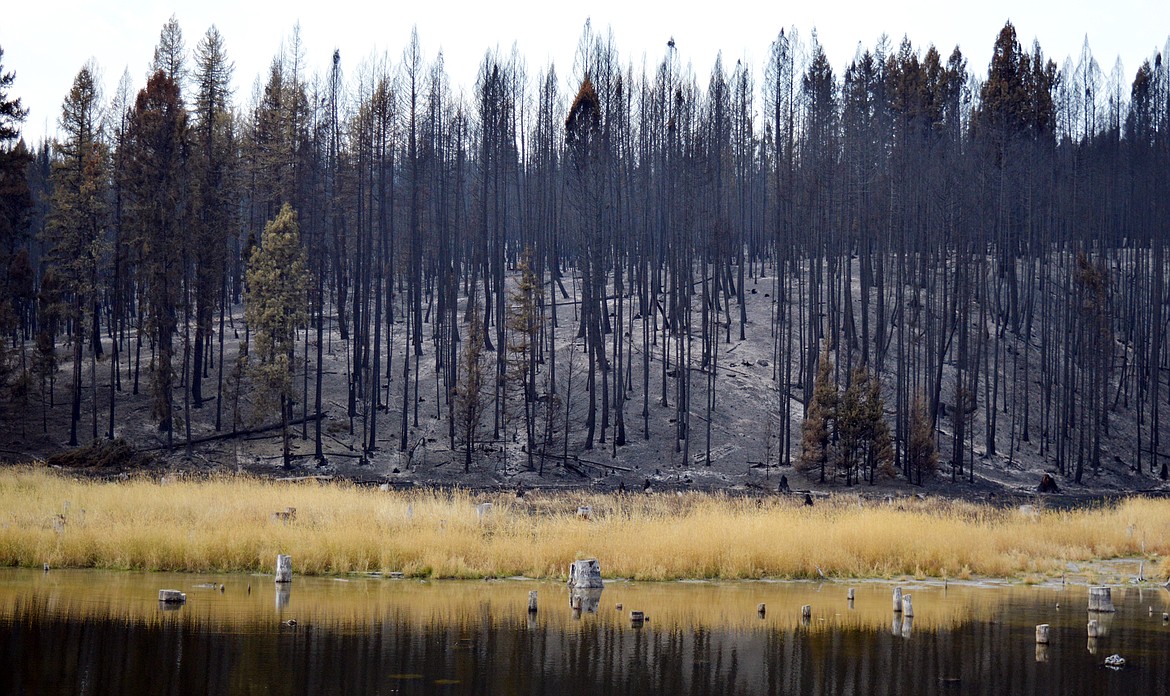Plans to salvage fire-scorched Kootenai timber advance
Patrick Reilly Daily Inter Lake | Hagadone News Network | UPDATED 8 years AGO
The effort to salvage fire-scorched timber is advancing in Northwest Montana’s forests.
Fire-burned trees, called “snags” when dead, can have 75 to 80 percent of living trees’ value. But if they’re left standing more than a year, damage from heat and bugs can render them worthless. The U.S. Forest Service is racing to complete the salvage process before that happens.
“Our goal is to have sales completed by next summer with work completed by early fall,” Forest Service Deputy Incident Commander Steve Brown said.
In a press release Wednesday, the agency’s Missoula office announced that salvage operations are currently planned on 11 Montana fire sites. Five of those — Caribou, Cub, Gibralter Ridge, West Fork and Moose Peak — are in Kootenai National Forest.
The Kootenai sites under consideration total 87,823 acres (one site, Moose Peak, extends into Lolo National Forest). Of those, 17,120 acres have been proposed for salvage.
“You’re limited in having the sale pay for itself,” Brown explained, citing dead trees’ reduced value, and the expense of building logging roads to reach them. Foresters try to “identify those stands that have the potential for being the most viable.”
These stands will next face review processes established by the National Environmental Policy Act.
Projects unlikely to have a significant impact can receive a Categorical Exclusion from detailed analysis. One Kootenai fire zone, Tamarack, already received such an exclusion, said natural resources and planning staff officer Quinn Carver. The contract for a 190-acre timber sale is currently being prepared.
Two other Kootenai fires, Gibralter Ridge and Moose Peak, look set to receive those exclusions.
The rest will require an Environmental Assessment outlining the impacts that they, and possible alternatives, could have.
Some projects could also require consultation with the U.S. Fish and Wildlife Service on endangered species habitat protection.
Past logging projects have gotten derailed by lawsuits and disputes over species protection. Brown told the Inter Lake that the Forest Service aims to avoid that outcome.
“The goal here is to plan our project so that they do not conflict with those species and their requirements.”
If all goes according to plan, he continued, the assessments will be completed in late spring or early summer, sales contracts finalized in June or July, and the work completed soon after.
Carver said that these projects would eventually be open to public comment.
Reporter Patrick Reilly can be reached at [email protected], or at 758-4407.
ARTICLES BY PATRICK REILLY DAILY INTER LAKE
Daines touts tax cuts during Kalispell visit
A custom-printed sign and line of local dignitaries greeted U.S. Sen. Steve Daines, R-Mont., when he walked into Kalispell’s Best Buy store Tuesday morning.
Kalispell's Olszewski bills himself as 'activist' senator
Dr. Al Olszewski sat down with the Daily Inter Lake editorial board Tuesday to discuss his campaign for U.S. Senate.
Libertarian Party spotlights jury nullification
Can a juror, faced with clear evidence that a defendant is guilty, still vote to acquit if he or she feels the law is unjust?

